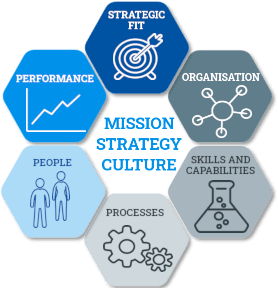Make the difference – the keys to succeeding in innovation
70% of leaders are not satisfied with their innovation performance. But what do you need to get right in order to make your company an innovation leader? To answer this question I combined management literature with my own personal experience in product innovation. Here’s my list of the things that make a difference.
A word before we start
This list is not in order of importance and it is not supposed to be exhaustive. It’s a personal list of factors that (a) consistently came up in the literature and (b) resonated with my experience working in product innovation for the last 30 years. In building it I realised that my professional reality was far from unique. Many of the issues I had seen impacting innovation performance have been identified by several leaders in innovation consulting. To help you dig deeper, I put links to various sources at the end of the article.
Let’s get started by looking at three key factors that set the context for successful innovation.
A clear strategic ambition and role for innovation

As highlighted by BGC and the PDMA, your company needs to set clear goals for innovation as part of the strategic plan. This includes what kind of innovation it will undertake, where it will innovate, the value innovation should create and the amount of resources it should take. It’s not enough to make general comments and high level plans. If you don’t have clarity at all levels of the organisation, then innovation stays as a vague concept disconnected with the “real” life of the company.
Top level leadership in an innovation-positive culture

Strongly connected to the first point, you need to have senior management ownership of innovation. The top leaders in the company need to drive the innovation agenda and to be seen doing so. This means collectively taking the time for such things as reviewing the innovation portfolio, allocating resources, engaging with innovation teams and promoting innovation practices in the company. It also means a culture that encourages innovation and rewards innovation performance. Just saying “innovation is important” is not enough.
Shared performance incentives

Your company should have Innovation reward mechanisms linked to KPIs and targets to drive individual and collective performance. Since successful innovation will involve many parts of the company, it’s important that these are cross-functional and not restricted to one team or department.
Now let’s have a look at three factors that are needed to successfully deliver innovation.
The right customer & consumer involvement

Another recurring theme that chimes with my personal experience is the positive impact of involving the end user in innovation. Who you involve will depend on your business and the nature of the innovation, but this typically includes carrying out things like Voice of Customer surveys, Market Research & Consumer Insight work. You need to do it before and during the innovation process. Teams can waste a lot of time and money developing things that no-one wants or needs.
Project Management skills, behaviours and tools

Being good at managing projects is almost universally cited as a key factor in innovation success. For me, this is not just about training a few people to be project leaders or team members. It needs a project culture to be established in the company. There should be a common vocabulary. People should instinctively know what behaviours are expected of them. Having the right tools also helps, but first you need the skills and behaviours.
Pipeline & Portfolio Management

This goes hand in hand with project management and concerns the selection and advancement of the innovation activities. Your company should have a good method and framework for selecting the right projects to work on. It should also have a method for managing how selected activities move forward. In New Product Development, this is typically known as the innovation funnel or pipe. Many companies rate themselves low in these competencies.
I want to also mention Governance of the innovation activities in this part. Making resource allocation decisions, priority calls or go/no go decisions on projects is not easy and many senior managers are not trained in this. Having the right pipeline and portfolio management processes in place will not help much if the people using them do not have the skills or knowledge.
Further reading
If you want to dig deeper, here is a selection of articles:
Robert G. Cooper, The drivers of success in new-product development, Industrial Marketing Management, 76 (2019), 36-47
BCG, Overcoming the Innovation Readiness Gap, April 2021
Kenneth B. Kahn, Gloria Barczak, John Nicholas, Ann Ledwith, and Helen Perks, An Examination of New Product Development Best Practice, J PROD INNOV MANAG 2012;29(2):180–192
PWC, Proven Paths to Innovation Success, strategy+business magazine issue 77 winter 2014
Want to know more?








